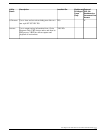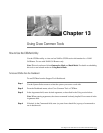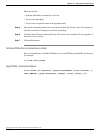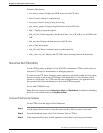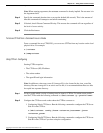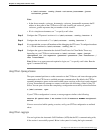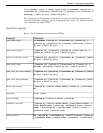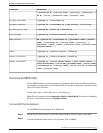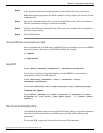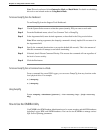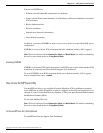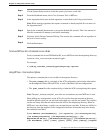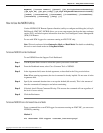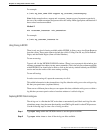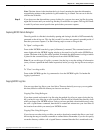
Parameters:Command:
[/alertRings N] [/callopt TYPE] [/priority] [/postroute] [/
TG N] [/SG N] [/authorize code] [/account code]
[/periph n] [/instrument N]get_agent_state (state)
[/periph N] [/instrument N] [/ext string] [/id string]get_agent_stats(stats)
[/periph N] [/skill N] [/skillID N]get_skill_stats (sk_stats)
[/periph N] [/callid N.devid] [/stack N]hold_call (hold)
DN [/periph N] [/instrument N] [/placement TYPE] [/manner
TYPE] [/alertRings N] [/callopt TYPE] [/priority] [/
make_call (mc)
postroute] [/TG N] [/SG N] [/authorize code] [/account code]
[keyword=VALUE ...]
[/periph N] [/callid N.devid] [/stack N]release
[/periph N] [/callid N.devid] [/stack N]retrieve_call (retrieve)
[/periph N] [/active CALLID.DEVID] [/held CALLID.DEVID] [/
stack ACTIVE HELD] [/blind DN][/placementTYPE] [/manner TYPE]
transfer_call (transfer)
[/alertRings N] [/callopt TYPE] [/TG N] [/SG N] [/authorize
code] [/account code]
How to Use the DBDiff Utility
Use the DBDiff utility to perform comparisons of database tables from two different databases.
For example, you might want to check that the ICR_Locks table contains the same data on both
sides of a Central Controller.
For use with nodes on which SQL Server is installed only.
Note: This tool can be used in both Interactive Mode and Batch Mode. For details on scheduling
this tool to run in batch mode see Using Batch Mode.
To Access DBDiff from the Dashboard
To run DBDiff from the Support Tools Dashboard:
Step 1
Use the System Select screen to select the system (namely, PG) you want to work with.
Step 2
From the Dashboard menu, select Cisco Common Tools > DBDiff.
Cisco Support Tools User Guide for Cisco Unified Software Release 2.1(1)
163
Chapter 13: Using Cisco Common Tools
How to Use the DBDiff Utility



